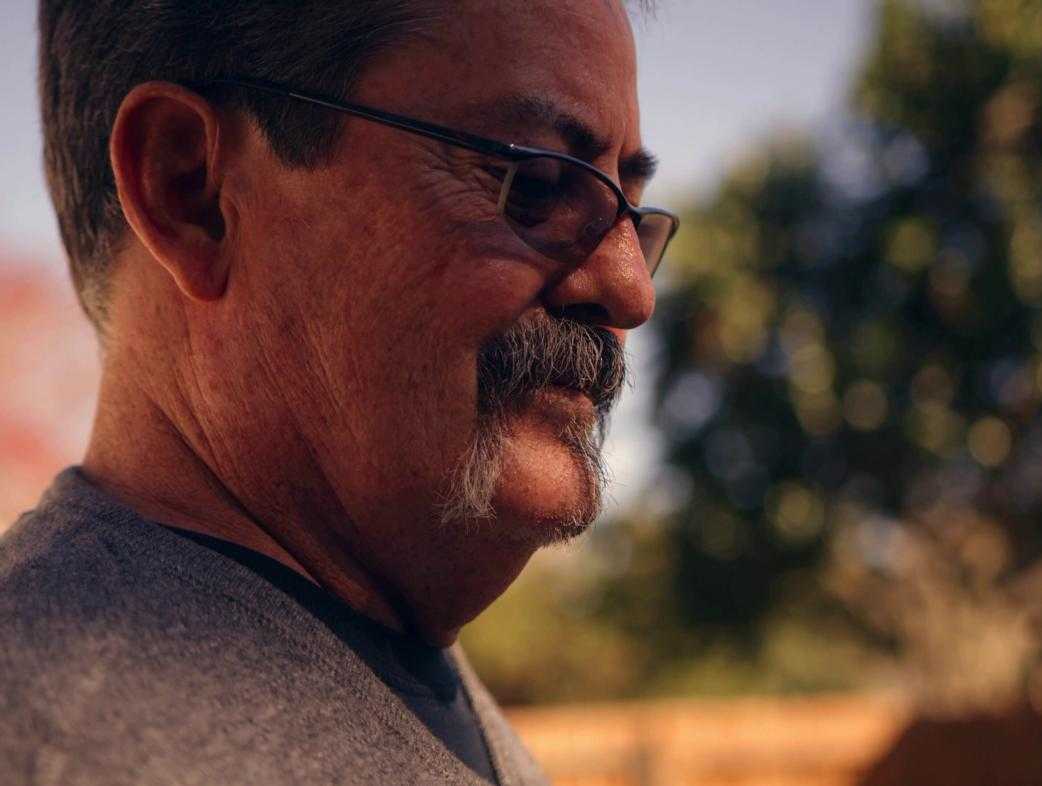How Often Do Trains Derail?
- The Fee Is Free Unless You Win®.
- America's Largest Injury Law Firm™
- Protecting Families Since 1988
- 25 Billion+ Won
- 1,000+ Lawyers Nationwide
Free Case Evaluation

The attorneys featured above are licensed in Florida. For a full list of attorneys in your state please visit our attorney page.
How Often Do Trains Derail?
Ever since the violent derailment of the Norfolk Southern train in East Palestine, Ohio, in early February 2023, followed by a disastrous decision to release millions of pounds of toxins into the air, it seems the nation has been plagued by more derailments. Morgan and Morgan was one of the first to take up an Ohio train lawsuit on behalf of the residents of East Palestine. Our goal is to get compensation from Norfolk Southern for its negligent actions. Since then, the spotlight on railroads and the probable lack of safety protocols has been intense, as it should be. In just over a month, we’ve heard about additional derailments in Florida, West Virginia, Michigan, Oklahoma, Nebraska, and, the latest, Alabama.
The question everyone is asking is just how common are train derailments? The answer is shocking and something that should concern everyone that lives within the vicinity of train tracks. While train derailments can cause injury and death to those unfortunate enough to be present when they derail, the fallout of chemical spills can be devastating and long-lasting to entire populations. We’ll look at the frequency of train derailments, what’s being done to address the epidemic, and what your options are if you’ve been harmed by the railroads.
How it works
It's easy to get started.
The Fee Is Free®. Only pay if we win.
Results may vary depending on your particular facts and legal circumstances.
Step 1
Submit
your claimWith a free case evaluation, submitting your case is easy with Morgan & Morgan.
Step 2
We take
actionOur dedicated team gets to work investigating your claim.
Step 3
We fight
for youIf we take on the case, our team fights to get you the results you deserve.
In Their Words
Real clients share their experience.
Based on select nationwide reviews.
Get answers to commonly asked questions about our legal services and learn how we may assist you with your case.
What Is the Data Available on Train Derailments in the United States?
If anything prompted people to question railroad safety in recent history, it was the fiery crash and the aftermath of the Ohio train derailment. We were in awe by the images of black smoke billowing suffocating toxins into the air in East Palestine, as well as the interviews given by residents of the troubling symptoms of toxic chemical exposure they’ve suffered since.
Still, the data shows that while train derailments are uncomfortably common, those involving toxic chemical spills are relatively rare. However, while it’s easy for government and corporate interests to accept the occasional environmental disaster in the name of commerce, it’s never acceptable when it happens in your own backyard.
Throughout the United States, there are about 140,000 miles of track. The railroads shaped the nation and are an integral part of our infrastructure. A significant percentage of the population lives near train tracks, and most that do, don’t even notice when a train comes barreling through. It’s just part of the background noise. However, for the residents of East Palestine, the rumble of the tracks now causes anxiety and is a reminder of how their lives are now overshadowed by the threat of developing serious illnesses in the future due to toxic chemical exposure.
What Causes Trains to Derail?
Trains derail when cars and tankers come off the rail. Generally, the cause is equipment malfunction, human error, hitting an object, or the weather. The Federal Railroad Administration indicates that broken or faulty railroads are the number one cause of derailments. However, The National Transportation Safety Board is heading up the investigation of the East Palestine derailment and is so far leaning toward the failure of a railcar axle. A surveillance video caught footage of flames emitting from the bottom of one of the Norfolk Southern rail cars about twenty miles away from East Palestine. The disaster took place a short time afterward, even though the crew was alerted to the possible mechanical failure. Thus far, there is no indication that the crew was negligent. They followed the appropriate protocol and tried to slow and stop the train before the catastrophic failure.
Still, historically, some of the worst train derailments that resulted in toxic spills involved human error. For example, in 2005, a Graniteville, SC derailment resulted from rail workers failing to align a hand-operated switch properly. A moving train and a parked train collided, traveling around 48 miles per hour. The consequences of this error were catastrophic. Nine people were killed and 250 seriously injured by the release of 60 tons of toxic chlorine gas. About 5,400 people in the surrounding vicinity had to be evacuated for nearly two weeks while HAZMAT officials and cleanup teams decontaminated the area. However, that disaster could likely have been averted if the railroads had invested more in safety protocols and standards.
In 2012, the residents of Paulsboro, New Jersey, experienced something similar to what happened in East Palestine. A Conrail train derailed over a bridge because of the decision of an inadequately trained engineer in charge. Four cars fell into Mantua Creek, one of which was carrying 23,000 gallons of vinyl chloride. Chaos ensued, and the emergency responders did not follow protocol for cleaning a chemical spill. Likewise, police stated that vinyl chloride was non-toxic, and it was days before area residents were told to evacuate. Years after the chemical exposure, people living in Paulsboro complain of health issues, including respiratory problems, which are symptoms of toxic chemical exposure.
A CSX Transportation train derailed in Maryville, Tennessee, in July 2015, carrying 24,000 gallons of acrylonitrile which can cause damage to the liver and nervous system through exposure. Five thousand people were evacuated, and 87 were treated for various symptoms, including respiratory issues and nausea. The cause of the derailment was never discovered.
In 1991, a Southern Pacific train derailed outside the Northern California town of Dunsmuir, spilling 19,000 gallons of metam-sodium into the Upper Sacramento River. The chemical is used in herbicides. Five thousand people were evacuated, and 100 were treated for exposure. While there were no human fatalities, scientists discovered that all fish, reptiles, and living organisms died within a 40-mile radius of the dump. The spill prompted the Environmental Protection Agency to list metam-sodium on the list of hazardous materials requiring special handling during shipment. The cause of the derailment was a faulty locomotive that could not pull the train cars uphill and an incorrect sequencing of cars.
A Canadian Pacific Railway train derailed close to Minot, North Dakota, in 2002, carrying five cars loaded with the fertilizer gas, anhydrous ammonia. The rupture of the tankers released a cloud of toxic gas over the city. One person died from the exposure, 11 were severely injured, and 322 suffered minor exposure-related injuries. The cause of the derailment was found to be fatigue cracks in the rails and joint bars, which were undetectable by then routine inspection protocols.
In 1992, a Burlington Northern Railroad train carrying toxic chemicals jumped the tracks near the border of Minnesota and Wisconsin. Eighty thousand residents were given the order to evacuate because a toxic cloud of chemicals was released into the atmosphere and the Nemadji River, including the cancer-causing chemical benzene as well as toluene. Twenty-six were treated for toxic chemical exposure, but thousands of fish, wildlife, and domestic animals died. The cause of the derailment was attributed to a broken rail line.
In 2015, a passenger train derailed in Philadelphia because it was traveling more than 50 mph over the speed limit. The engineer mistook the speed limit for that of another area further down the line. Although this accident did not involve toxic chemicals, it is one of the worst derailments involving passengers. The accident killed eight people and injured more than 200 aboard, 11 of which were critically injured. While the engineer was ultimately responsible for the wreck, it may have been prevented had Amtrak installed a technology system known as “automatic train control.” The system was installed shortly after the disaster.
How Frequently Do Trains Derail?
If you’re researching the Ohio train lawsuit, you may wonder how these disasters happen and how frequently they occur. According to the Federal Railroad Administration, there are roughly 1,000 derailments yearly. While annual derailments are declining compared to historical data, that is still significant and problematic, particularly when hazardous chemicals are being transported.
While freight train chemical leak accidents are uncommon, about ten occurred in 2022. Still, train incidents involving hazardous chemicals are less frequent than other modes of transportation, like eighteen-wheelers.
How Is Railroad Transportation of Hazardous Chemicals Regulated?
Generally, commercial transport of hazardous material is strictly regulated. For instance, certain classes of dangerous chemicals are required to be shipped in specially designed tankers. Bigger shipments have restricted routes, and the railroads set speed limits and require specific training in handling toxic chemicals. Tankers and cars that carry hazardous materials must be marked as such, and the crew must carry documentation of each car and its position. Furthermore, there are strict protocols concerning testing, inspections, and loading/unloading of cargo.
When an accident occurs, the National Traffic Safety Board (NTSB) usually leads the investigation with the assistance of the Federal Railroad Administration. Investigations into accidents often result in the refinement of in-place policies and the development of new ones based on what is learned. Analyses generally include looking at the track, signaling systems, engines, cars, crew, witnesses, and other equipment involved, such as the train’s black box data.
Thus far, in the investigation into the Norfolk Southern derailment in East Palestine, Ohio, investigators have isolated the car that caused the wreck and believe an overheated wheel bearing is to blame. Still, the derailment itself didn’t cause the disaster that led to millions of pounds of toxic chemicals being released. It was a decision made after Norfolk Southern officials warned of the possibility of an explosion due to a faulty pressure relief valve on a car that contained vinyl chloride.
In the aftermath, however, people are questioning the data and facts presented to government officials by Norfolk Southern. Some suggest that Norfolk Southern didn’t give government officials the whole picture. For example, one tanker carrying vinyl chloride was problematic, but they chose to release five tankers full of toxic materials. There may have been options other than releasing and burning the chemicals, but these options likely would have cost Norfolk Southern more time and money.
What Is Happening With the Ohio Train Lawsuit?
Morgan and Morgan Law Firm is heading up a class action lawsuit on behalf of East Palestine residents for the negligent actions of Norfolk Southern. The railroad failed to extinguish the fires and instead chose to dump 1.1 million pounds of toxic chemicals into the environment, causing people to feel sick and animals and aquatic life to die. People who have been affected will face a lifetime of worry about developing deadly cancers down the road and lost property values and income.
The Ohio train lawsuit is seeking relief on behalf of the plaintiffs for the following:
- Medical monitoring
- Injunctive and declaratory relief
- Punitive damages
- Damages connected to injuries
- Emotional distress
- Loss of property value
- Increased risks of future illnesses
Morgan and Morgan are not new to handling toxic and environmental disaster lawsuits. In fact, we’ve recovered billions for people impacted by the Porter Ranch gas leak in California, the Deepwater Horizon oil spill in the Gulf of Mexico, the Merrimack Valley gas explosions, and the Tennessee coal ash spill.
You may be eligible to join our class action if you live or formerly lived within 30 miles of the East Palestine chemical spill. An MDL will likely be formed to handle the number of lawsuits filed so the courts can consolidate the process. However, people affected can still file individual lawsuits. We’re just at the beginning of this legal journey to recover compensation for the victims, but we intend to see it through so that justice will be served. Even if you haven’t suffered health effects, lost income, or lost property value, you still have a chance to make a difference in the attitudes of corporate profiteers that put dollar signs before public safety. Norfolk Southern, like other railroads, has shrunk the number of employees that might have identified issues with the railcar that caused the derailment, all while growing its profit base. Now, rail workers have about 90 seconds to inspect tankers that carry hazardous materials through small and big towns in America. All in the name of profit.
You and your loved ones deserve to be compensated for this negligence. While we can’t erase the day of the derailment, we can ensure you get the healthcare screening you deserve and other forms of compensation.
Contact Morgan and Morgan today about your eligibility to join the Ohio train lawsuit.


